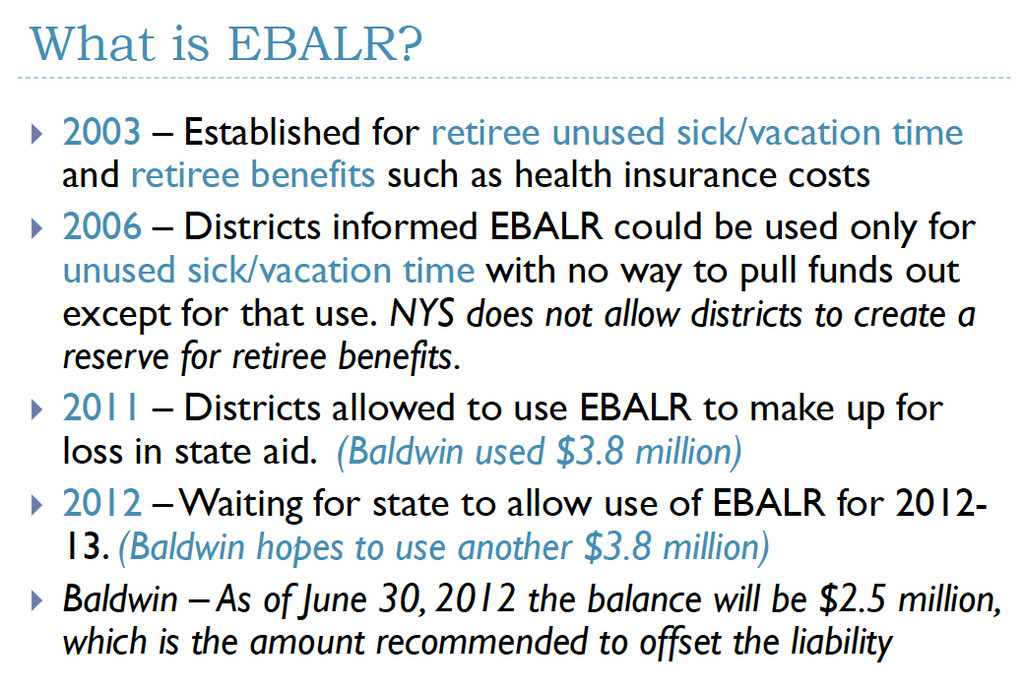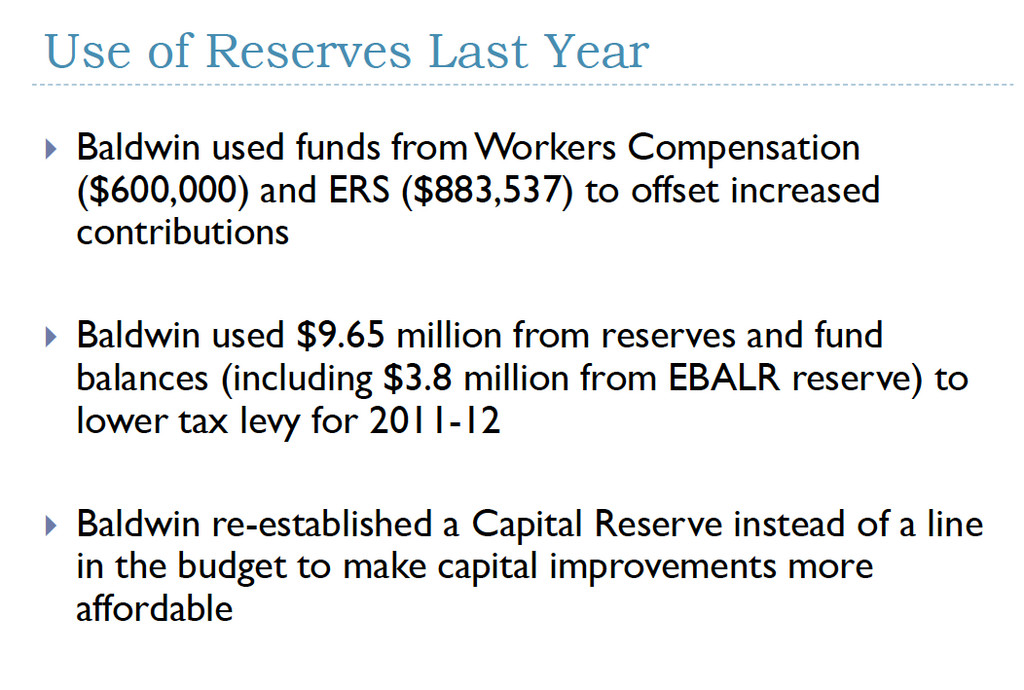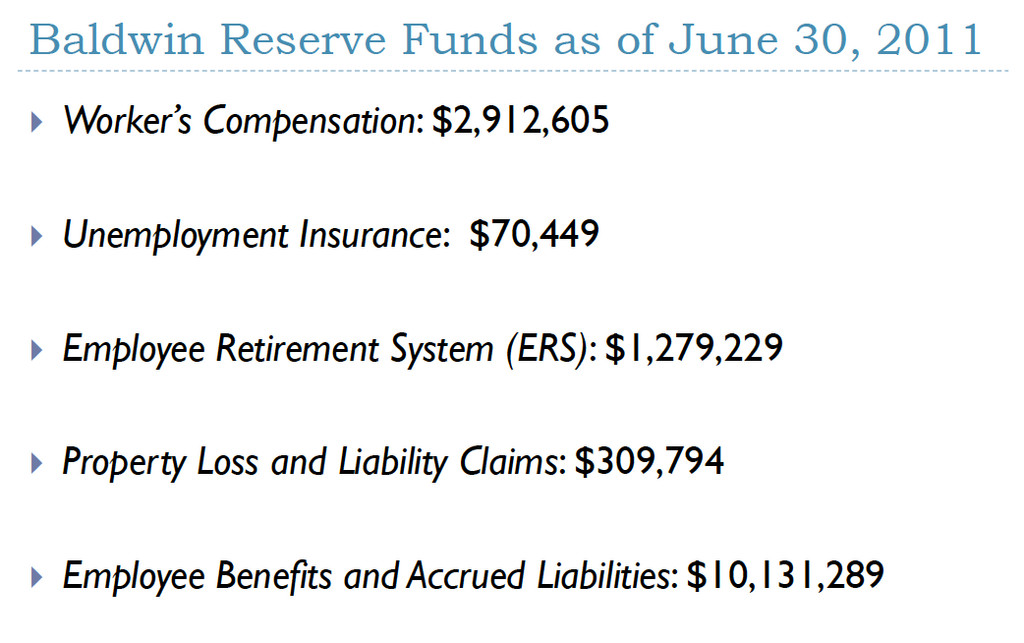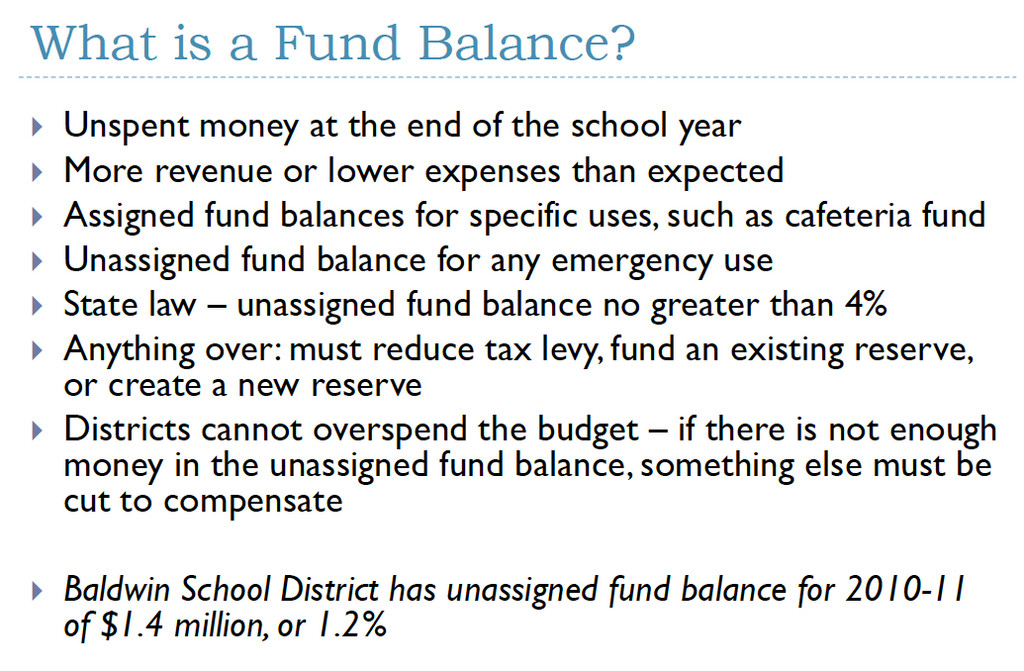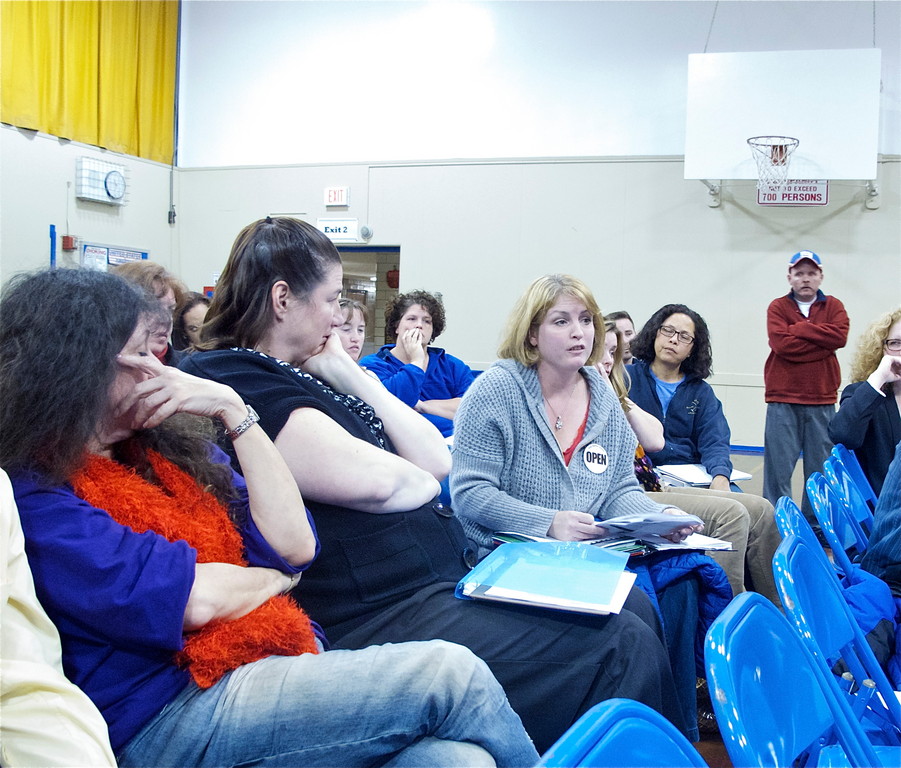BOE addresses FAQs
With budget gaps, school closings and reworked busing routes in the air, Baldwin Board of Education meetings are no longer genial hour-long affairs. Terms like “tax certiorari,” “EBALR” and “unassigned fund balances” have wormed their way into the public lexicon, and the same questions seem to be raised at meeting after meeting.
In the hope of eliminating some of the repetition last week, school board President Mary Jo O’Hagan narrated a PowerPoint presentation explaining two of the issues most frequently raised before the board: What exactly are fund
balances and reserve funds, and how does the board employ them?
The information asymmetry between the board, whose members have been poring over budget details for months, if not years, and the public, which is locked in a perpetual effort to catch up, has become the most contentious issue at meetings that now run five hours or longer. Parents, grandparents and concerned citizens plead again and again for information, and the board tries, in as transparent a way as it can, to point its constituents in the right direction — whether it’s the board’s own website (www3.baldwinschools.org), a handout or even one-on-one meetings or phone calls with board members.
In some ways, the passion on both sides of the folding tables in the Brookside gym last week was laudable — everyone had the best interests of the children at heart — but as Wednesday-night meetings turn into Thursday-morning meetings, it becomes more tempting to speed things up. It was to this end that O’Hagan scripted her presentation.
“The unassigned fund balance is for completely unexpected occurrences,” O’Hagan explained in her patient, upbeat manner, referring to a slide projected onto a screen at the back of the gym. “Let’s say a year when we have a lot more snow than expected …”
“… Or when Shubert catches fire,” added Trustee Mary Clark, two seats to O’Hagan’s left, referring to a December 2010 blaze that consumed an outbuilding at Shubert Elementary.
“Reserve funds are like savings accounts,” O’Hagan continued, “but for specific
purposes.”
The public perception that made the presentation necessary is that the school board is hoarding extra money from previous budgets rather than allotting it to bridge this year’s $4 million budget gap. A number of residents have suggested that the district might repurpose that money to keep schools open or preserve programs like music, sports and all-day kindergarten. The board’s response to these suggestions is that it dipped into the fund to the extent that the state allowed last year, and that further draining it would be, in effect, gambling with the district’s future.
The salient points of the district’s
presentation are presented in the accompanying boxes. The upshot is that while the
district does have money saved in a “rainy day” fund, it is for emergencies like fires, floods, lawsuits and other unforeseen events. There is some hope that legislative changes at the state level will allow the district to
reallocate some of that money to cover its costs this year, but those changes have yet to materialize.
The next Baldwin Free Union School District meeting is the community input meeting. It will be held at 8 p.m. on Jan 25 at the Middle School. The Facilities Committee — which has been studying Baldwin’s optimization of school buildings — will present its much-anticipated findings at the meeting.


